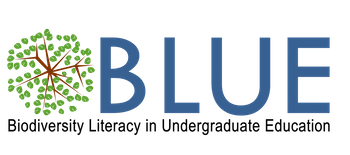Birds and Lice: Reciprocal Natural Selection
Author(s): Anna Monfils1, Julie Allen, Brad W Goodner, Debra Linton1
Central Michigan University
1861 total view(s), 728 download(s)
BLUE Coevolution of Birds and Lice.docx(DOCX | 8 MB)
BLUE Louse Module 2.pptx(PPTX | 55 MB)
- License terms
Description
Upon completion of this module, each student should be able to:
- Identify adaptations that help organisms accomplish the functions necessary for life.
- Analyze the evolutionary history of a group of organisms.
- Evaluate experimental evidence of reciprocal selection in a parasite and its host.
In this exercise students will investigating the relationship between birds and their parasitic lice. Birds and lice both have adaptations that help them accomplish the functions necessary for life. These adaptations are coded for by genes and have been influenced by the evolutionary history of the organisms and the selection pressures acting on them. These selection pressures include the interspecific interactions that these groups participate in. When two species interact, they can exert selection pressures on each other. This relationship is called coevolution. In this module, students will investigate the form and function of birds and their lice parasites and evaluate how the evolution of each organism is influenced by the other.
Notes
This material is based upon work supported by the National Science Foundation under DBI 1730526; 1925312; 1902031. Any opinions, conclusions or recommendations expressed in this material are those of the author(s) and do not necessarily reflect the views of the National Science Foundation.
Cite this work
Researchers should cite this work as follows:
- Monfils, A., Julie Allen, Goodner, B. W., Linton, D. (2020). Birds and Lice: Reciprocal Natural Selection. Biodiversity Literacy in Undergraduate Education, QUBES Educational Resources. doi:10.25334/JAWH-MZ69
